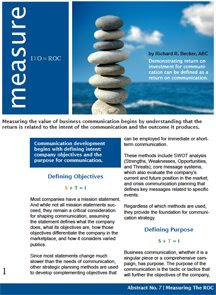
According to the Las Vegas Convention and Visitors Authority (LVCVA), Las Vegas hosted 22,454 conventions and meetings that attracted more 6 million business people and conventioneers in 2008. It accounted for an economic impact of $8.5 billion, employed more than 46,000 Southern Nevadans (75,000 with indirect employment), and represents close to 15 percent of the city's total visitor volume.
On Monday, President Obama said he wanted to end that.
“We’re going to do something to strengthen the banking system. You are not going to be able to give out these big bonuses until you pay taxpayers back. You can't get corporate jets. You can't go take a trip to Las Vegas or go down to the Super Bowl on the taxpayers' dime. There's got to be some accountability and some responsibility.” — President Obama, Town Hall discussion in Elkhart, Indiana
There does have to be accountability and responsibility.
"Mr. President, I understand the enormous burden you carry in dealing with the worst economy since the Great Depression. I also understand the need for accountability, but your comments are harmful to the meetings and convention industry as a whole and Las Vegas specifically." — Mayor Oscar Goodman, Las Vegas, Letter posted at Las Vegas Now
Careless research and ill-advised words damage lives.
According to the Las Vegas Review-Journal, President Obama based his decision on a report that cited "$300 hotel rooms" as an example of extravagance. The Venetian, which is a more upscale property, lists rooms for $189 per night. The LVCVA reports the average room rate was $119.19 in 2008, with a low of $96.39 in December.
Specifically, businesses attend conventions and meetings in Las Vegas because of its room rate discounts, reasonable air fare, diversity of offerings, and the strong local infrastructure to support it. Since 2000, the city has gone to great lengths to carry a dual message that, despite its party town image, it is an extremely smart and cost-effective choice for business.
At least four major companies have already canceled their plans to meet or hold conventions in Las Vegas this year. Some of the cancellations have to do with the perception of Las Vegas, while others might be because of their own financial constraints. State Farm planned to book 11,000 rooms in September, but those rooms will now remain vacant. Wells Fargo, which received some bailout money, also backed out of a 12-day junket in response to cries that the meeting represents wasteful spending.
Unless replaced, the damage caused by these lost bookings could be severe to a local economy already experiencing a 9.1 percent unemployment rate, well ahead of the national average. It is anticipated to hit double digits this year, with the state facing a economic crisis, which began after it was hit especially hard by the subprime mortgage situation.
The campaigning needs to end and bailouts too.
During campaigns, politicians are sometimes quick to call out and vilify opponents, industries, and government. The message becomes simple. Everything is bad, and we need to change it all. While I'm not a fan of peddling fear, many campaign managers understand all too well that these trumped up rally cries can move certain publics to the polls.
However, once elected, most politicians are seasoned enough to understand that the communication needs to shift in order to govern. As elected officials, most know that effective leadership requires the polarization to stop and productivity to begin. They recognize that they no longer represent campaign slogans but rather the Wall Street stock broker in New York and the maid in Las Vegas and the automotive lineman in Detroit. They are no longer entitled to pick and choose which American people they represent. They represent us all.
Regardless of how you feel about Las Vegas, President Obama's message did not communicate anything about this city as much as it communicated something about the recent waves of bailouts and the stimulus package in general. The power of the purse is the ability of one group to manipulate and control the actions of another group by withholding funding, or putting stipulations on the use of funds. This power grab is alive and well in America.
After Monday, it now seems all to clear that President Obama is intending to use this power and perhaps abuse it, under the guise of protecting taxpayer money. However, in delivering this message, he neglects the obvious. The 46,000 Americans directly employed by the convention industry in Las Vegas are taxpayers too. They are owed an apology.
Good night and good luck.






























